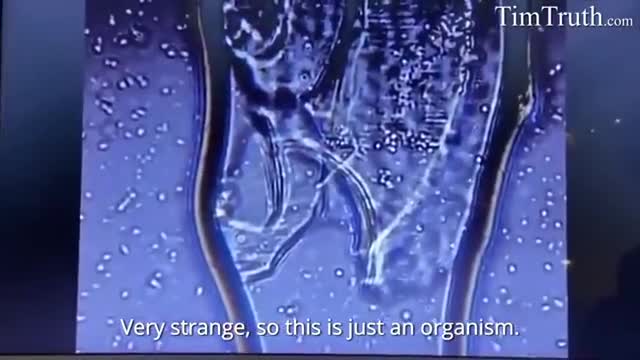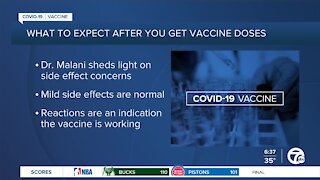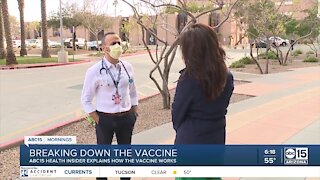Premium Only Content

Why Are Cytotoxic Carbon NanoTubes or NanoWorms Found In mRNA Vaccines?
Please identify the black nano worms in the Pfizer vaccine as seen under pHase contrast microscopy?
In the phase contrast microscopy video above, you have asked me to review and comment.
I would suggest the following: what you are viewing is a carbon multi-walled nanotube (MWCNTs) which I have shown to elicit asbestos-like toxicological effects on cell membranes and their genetics. To reduce needs for human risk I have suggested that the physicochemical characteristics or reactivity of nano materials should be used to predict a serious health hazard. Fibre-shape and the ability to generate reactive oxygen species (ROS) are important indicators of highly acidic hazardous materials. Asbestos is one of those known toxic acidic ROS generators, while MWCNTs may either produce or scavenge ROS.
However, certain biomolecules, such as albumin – used as dispersants in nano material or particulate preparations for toxicological testing in vivo and in vitro - may reduce the surface reactivity of these nano materials.
Testing MWCNT materials induced highly variable cytotoxic effects which generally are related to the abundance and characteristics of agglomerates/aggregates and to the rate of sedimentation. I have found that All carbon nano materials - MWCNTs, like the one you are asking about in the above video, will scavenge hydroxyl radicals which is a major alkaline bufferr (OH-) released by lymphocyctes to protect the alkaline design of the body fluids for the purpose of reducing proton/hydrogen concentrations in the body fluids, leading to the risk of decompensated acidosis in all of the fluids or solutions of the body which I have tested, including the vascular and interstitial fluids of the Interstitium, leading to pathological blood coagulation, hypoxia and death by suffocation.
The effect of bovine serum albumin (BSA) in cell culture medium with and without BEAS 2B cells on radical formation/scavenging by five MWCNTs, Printex 90 carbon black, crocidolite asbestos, and glass wool, using electron spin resonance (ESR) spectroscopy, showed cytotoxic effects measured by trypan blue exclusion assay among the materials tested. Two types of long, needle-like MWCNTs (average diameter > 74 and 64.2 nm, average length 5.7 and 4.0 μm, respectively) induced, in addition to a scavenging effect, a dose-dependent formation of a unique, yet unidentified radical or antioxidant release in both absence and presence of cells, which also coincides with cytotoxicity of these nanotubes or in simple terms MWCNTs are a contributing factor in the cause of a cancerous condition.
Based upon the microscopic evaluation presented in the above video it is my professional opinion that what is being viewed is a MWCNTs or a carbon nanotube which is highly cytotoxic or acidifier to blood, interstitial fluid compartments and intracellular fluids, which may lead to cell membrane degeneration and genetic mutation of the body cells putting at risk the healthy state of all glands, organs and tissues.
Watch, listen, learn, care and share with everyone you love and care about - www.drrobertyoung.com/blog
-
 1:06
1:06
WXYZ
4 years agoVaccine: What to Expect
4581 -
 3:16
3:16
WXYZ
3 years agoWhat state & local leaders are doing to address vaccine hesitancy in communities of color
62 -
 0:32
0:32
IOL-IndependentOnline
3 years ago $0.12 earnedCovid-19: What is in a vaccine?
2241 -
 10:09
10:09
Cavalry Man 86
3 years agoWhat Are We Doing?!
69 -
 3:02
3:02
KNXV
3 years agoWhat is in the coronavirus vaccine?
43 -
![[Day 26] CS Blast bounty baby](https://1a-1791.com/video/fwe2/e7/s8/1/B/Q/H/2/BQH2w.0kob-small-Day-22-J-U-I-C-E-R.jpg) LIVE
LIVE
ggezlol_tv
1 hour ago[Day 26] CS Blast bounty baby
537 watching -
 LIVE
LIVE
Sgtfinesse
1 hour ago💥Sunday Morning Hunt for Featherweight Artifact | New World PVP Server: Sclavia
371 watching -
 11:25
11:25
Film Threat
17 hours agoLET'S DISCUSS THE 2025 OSCAR NOMINATIONS | Film Threat News
6.44K3 -
 13:07
13:07
DEADBUGsays
1 hour agoThe Southport Massacre, The Great British Cover-Up
11.2K6 -
 25:26
25:26
hickok45
4 hours agoSunday Shoot-a-Round # 265
8.2K11